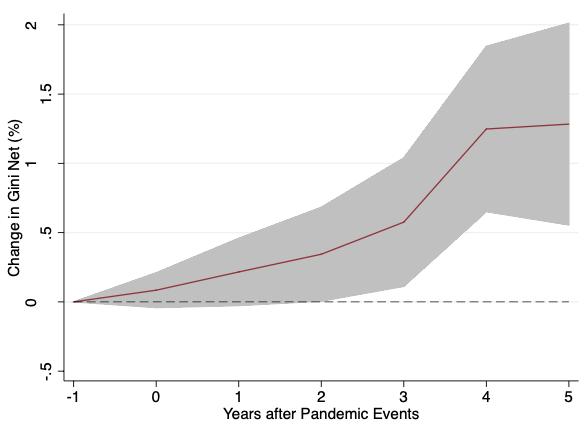By Associated Press|Jan. 28, 2022By Associated Press|Jan. 28, 2022, at 2:51 p.m.
Editorial Roundup: New England
MoreBy The Associated Press
Barre-Montepelier Times-Argus. January 27, 2022.
Editorial: COVID roulette
For a few consecutive days, Vermont’s COVID numbers were encouraging in their retreat. Thursday’s numbers provided another unfortunate bump upward — with luck, an anomaly.
Yesterday, the state Department of Health reported 1,490 new COVID cases, up from 523 on Wednesday. There were 108 individuals being treated in Vermont hospitals with COVID — 27 of them were in the ICU. There were two new deaths since Wednesday, bringing the total Vermont deaths from COVID since the pandemic started to 529.
Political Cartoons
Two other pandemic-related pieces of news this week also proved humbling.
The Pan-American Health Organization said more than 8 million new COVID-19 cases were reported in the Americas during the past week, a 32% increase over the previous week. Some 18,000 deaths also were reported, a 37% increase over the same time period.
The United States continues to have the highest numbers of new infections in the region.
The U.S. Centers for Disease Control and Prevention (CDC) said during the past week an average of 692,000 new cases have been detected daily. While that is a decrease of 6% from the previous week, U.S. deaths attributed to COVID rose to an average of 2,200 per day — a 21% increase. (Nationwide, hospitalizations were at 19,800 per day on average, an 8% decrease from a week ago.)
According to the CDC, hospitalization rates also are high among unvaccinated adults — a persistent problem in the U.S., where despite the availability of vaccines and boosters, tens of millions of Americans remain unvaccinated because of misinformation and political ideology.
Which brings us to the second piece of news.
A recent study published in Morbidity and Mortality Weekly Report estimated the case and death rates and incidence rate ratios (IRR) among unvaccinated and fully vaccinated (with booster doses) adults during pre-delta (April to May 2021); delta emergence (June 2021); delta predominance (July to November 2021); and omicron emergence (December 2021) periods in the United States.
The study aimed to assess the impact of full vaccination and booster doses.
According to the report, while COVID-19 vaccine effectiveness decreased with emergence of the delta variant and waning of vaccine-induced immunity, protection against hospitalization and death has remained high.
In fact, in 25 U.S. jurisdictions, decreases in case IRRs for unvaccinated versus fully vaccinated persons with and without booster vaccine doses were observed when the omicron variant emerged in December 2021. Protection against infection and death during the delta-predominant period against infection during omicron emergence were higher among booster vaccine dose recipients, and especially among persons aged 50 to 64 and older than 65 years.
According to the report, COVID-19 vaccination certainly protected against the SARS-CoV-2 infection, even as the omicron variant became predominant. But the unvaccinated were not so lucky.
Between April 4 and Dec. 25, 2021, a total of 6,812,040 COVID-19 cases among unvaccinated people and 2,866,517 cases among fully vaccinated people were reported among people aged over 18 years in 25 U.S. jurisdictions; 94,640 and 22,567 COVID-19-associated deaths among unvaccinated and fully vaccinated people, respectively, were reported. Those are notable ratios.
The age-standardized IRR for cases in unvaccinated versus fully vaccinated people was 13.9 during April to May and progressively declined to 8.7 during June; 5.1 during July to November; and 3.1 during December, coinciding with the periods of delta emergence, delta predominance and omicron emergence, respectively.
Unsurprisingly, rates of COVID-19 cases were lowest among fully vaccinated persons with a booster dose, compared with fully vaccinated persons without a booster dose, and much lower than rates among unvaccinated persons.
Despite vaccination coverage, the case rates escalated during the omicron predominance period among unvaccinated and vaccinated individuals.
We are glad numbers in Vermont have turned a corner. We are concerned the U.S. numbers (and COVID deaths) continue to climb.
The vaccinated will continue to wear masks as a precaution. Because, as the aptly named Morbidity and Mortality Weekly Report has told us: The unvaccinated have been bearing the brunt of the pandemic as of late.
So as the more recent adage goes: “All eligible persons should stay up to date with COVID-19 vaccination. Get jabbed.”
___
Boston Globe. January 28, 2022.
Editorial: Lower taxes in Massachusetts? Yes, please.
Families, low-income workers, and seniors deserve a break, and the estate tax merits an overhaul.
In his final year in office, Governor Charlie Baker has decided to go big on the issue of tax cuts before he goes home.
And in proposing nearly $700 million in cuts as part of the coming year’s state budget, Baker has set two worthy goals: making life a little easier for the state’s neediest amid a bout of inflation, and improving Massachusetts’ competitive advantage at a time when the remote office has made workers more footloose than ever.
Democratic lawmakers will surely have their own ideas and their own priorities, but Baker’s menu of tax cut options has provided a number of possibilities that can and should prove too attractive, too obvious, and much too needed to ignore.
“The cost of just about everything is going up, and these tax breaks would help offset some of those costs for families,” Baker said at a news conference this week to outline major elements of his $48.5 billion spending plan. “The last two years have been pretty tough on a lot of the populations we’re looking to help here, and I’d love to see the Legislature take them seriously.”

The state has indeed had an embarrassment of riches in the past year or so — not including the money pouring in from the federal government. The rainy day fund is expected to be comfortably full, at $5.9 billion, before the next budgetary year begins, and Baker’s budget generously funds aid to cities and towns and education while proposing a major boost to housing programs. So if ever there is a year to restructure some taxes, this is the one.
Tax breaks aimed at, as Baker put it in his State of the Commonwealth address, “those struggling to make ends meet,” include:
▪ Doubling the current allowable tax credits for dependent and child care, which would put some $167 million into the pockets of more than 700,000 families.
▪ Doubling the “circuit breaker” property tax credit for income-eligible seniors, a $60 million item.
▪ Increasing the current cap on rent deductions from $3,000 to $5,000, a $77 million item.
▪ Raising the income level at which people are required to file an income tax return from $8,000 for a single filer to $12,400; from $14,400 for those filing as a head of household to $18,650; and for joint filers from $16,400 to $24,800. That, according to the Baker administration, would put $41 million back into the pockets of 234,000 low-income taxpayers.
It’s hard to argue with Baker’s pitch that it’s time to give back to hard-pressed Massachusetts families “some of the tax revenue they created through their hard work.”
And it’s just as hard to argue against those long overdue changes to the estate tax, which makes Massachusetts “an outlier among the states,” as the Massachusetts Taxpayers Association said in its analysis of the governor’s proposals.
First, Massachusetts is one of only 12 states that levies an estate tax. There’s a good reason (other than the sunshine) retirees head to places like Florida or opt for that ski chalet in New Hampshire. And, along with Oregon, Massachusetts has the lowest threshold for taxation — $1 million, which applies to the entire value of an estate. That includes stocks, bonds, 401(k)s, and proceeds from life insurance policies. And real estate — with the median price of a single-family home in Greater Boston now around $750,000, it’s pretty easy to hit that benchmark.
But wait, as they say in those infomercials, there’s more. Go over that $1 million and the estate tax applies to the entire value of the estate — something even Oregon, which only taxes the amount above that $1 million mark, doesn’t do.
Baker proposes to raise the exemption to $2 million and apply the tax only on the amount over that threshold.
The cost in foregone state revenue in its first year is estimated by the administration at $231 million. But let there be no mistake — even in the midst of an upcoming debate over the so-called millionaires income surtax — this is no giveaway to high earners. High earners are expert at planned tax avoidance long before they leave this earth. Some will simply establish residence in a no-tax state or set up elaborate trusts — or both. It’s the middle class that has borne the burden of this tax and will continue to do so until it is fixed.
Massachusetts lawmakers have always been adept at finding more and better ways to spend taxpayer dollars — some of those projects wise, but some of them in the you-can’t-have-enough-town-gazebos category. It’s been a tough two years for many in this state. Several well-targeted tax breaks would help ease that burden — and help the state shed its long-outdated Taxachusetts image in the process.
___
Boston Herald. January 26, 2022.
Editorial: State sends bad signal on STEM education
The revelation’s nothing new: STEM education is the ticket to a bright and lucrative future. The U.S. Bureau of Labor Statistics 2019–29 employment projections show that occupations in the STEM field (science, technology, engineering and mathematics) are expected to grow 8% by 2029, compared with 3.7% for all occupations.
So why did the state Board of Elementary and Secondary Education agree to phase out technology/engineering tests in the MCAS science exams offered to high school students? As the State House News Service reported, chemistry is also getting the heave-ho. Education Commissioner Jeff Riley citing the costs of test development and “continued low and declining participation” in recommending those two exams be eliminated starting in the spring of 2024.
Riley said in a memo to the board that students will still be able to take chemistry, engineering and technology courses.
At the board’s December meeting, Riley said that in 2019, only 3% of students who took a science MCAS — or 2,319 students — opted for one of those two subjects.
Board member Paymon Rouhanifard called Tuesday “a sad day” and said he considered his vote to scrap the tests “a vote of acquiescence.”
“I believe deeply that you measure what you value and would posit that we are implicitly devaluing chemistry and engineering,” he said.
Which is exactly the opposite of what we should be doing.
As Roll Call reported, the Department of Homeland Security added 22 degrees that can qualify international students for a three-year work permit after graduation in an effort to grow U.S. competitiveness in math and science fields.
Under the Optional Practical Training program, foreign students who graduate from American universities may stay and work in the U.S. for one year after graduation, at which point they would need to apply for a work visa. But those who complete degrees in designated science, math, engineering or technology degrees may extend those work permits for an additional two years, giving them more time to work in the U.S. and more chances to secure a visa in the H-1B lottery.
“STEM innovation allows us to solve the complex challenges we face today and make a difference in how we secure and protect our country,” Homeland Security Secretary Alejandro Mayorkas said in a statement.
The U.S. wants people with STEM skills. Wouldn’t it make sense to ensure our own students get those skills, starting in high school, and go on to be part of the innovation that makes our country competitive on the world stage?
“I want to make sure we’re not sending an unintended signal to the field that these subjects don’t matter or that all of the sciences don’t matter, and I think the reality is we need to initiate a variety of different strategies and programs in order to continue to support and strengthen high-quality coursework across all the sciences, including assessments,” Education Secretary James Peyser said.
This isn’t the way to do it.
There are initiatives and university collaborations designed to get students interested in STEM education around the state. Funding for schools is at a premium, but we would hope that carving out a slice for something so vital to students’ future careers would be worth it.
STEM jobs are there for the filling — our schools must give our kids a leg up.
___
Portland Press Herald. January 23, 2022.
Editorial: Susan Collins lets us down on voting rights
Maine’s thin-skinned senior senator fails to meet a historic moment.
With the future of democracy in America up for debate, Sen. Susan Collins let us down.
On Wednesday, she and her Republican colleagues blocked a vote on two bills that would have protected the right to vote, which is under attack in states controlled by Republican legislatures and governors.
It was the fourth time in less than a year that Collins joined a filibuster to stop this legislation. Unlike the first three times, however, they couldn’t prevent it from being discussed at all and senators debated into the night.
When Collins finally took the floor Wednesday, it was not to argue the merits of the bill but to scold Georgia Sen. Jon Ossoff, who had embarrassed her earlier in the evening. Ossoff read a quote that had come from her own lips in 2006, when she and a unanimous Senate had supported reauthorizing the Voting Rights Act.
Collins said it was “sad” that her Democratic colleague would question her “integrity or motives” by calling attention to her evolving position. But that was not as sad as seeing Collins focus on a perceived personal slight at a moment when so much is at stake for the country.
Ossoff was absolutely correct when he pointed out that Collins and others claim to revere a civil rights icon like the late Rep. John Lewis while they vote to undo his life’s work. Collins may not have liked hearing it, but it’s the truth.
The Voting Rights Act became law in 1965 and has been reauthorized multiple times with bipartisan support. Among its provisions was a requirement that the Justice Department approve any changes to voting practices before they could go into effect in states and districts that had a history of racial discrimination. That provision was struck down by the Supreme Court in 2013 for being out of date, and Congress has not been able to agree on a modern version. Some states have taken advantage of the opportunity. Numerous studies show that Black voters wait in longer lines on Election Day and are more affected by cuts to polling places, early voting options and strict voter ID laws than the rest of the population.
Voters can still sue for violations under the Voting Rights Act, but even that was made more difficult last year by another Supreme Court decision that limits the kinds of discrimination the courts can consider. And the time it takes for a case to move through the justice system make a lawsuit a bad alternative to preventing discrimination.
After the 2020 election, in which minority turnout surged, voter suppression efforts ramped up. Fueled by former President Donald Trump’s lies about widespread fraud, Republican-controlled state legislatures in Georgia, Texas and other states began passing laws that make it harder to vote, especially for people of color, the poor and those with disabilities.
Along with an update of the Voting Rights Act, which has been renamed for John Lewis, Collins and the Republicans also filibustered the Freedom to Vote Act, which would have created standards for voter registration, absentee voting, mail-in ballots, access to the polls and other guarantees that would be equally extended to all citizens in every state.
Last year, 19 states passed 34 laws that voting rights activists predict will depress turnout and lengthen lines in minority districts. Now that state legislatures are back in session and Congress has shown it won’t stop them, other restrictions might be on the way.
This is a dangerous moment: Maine’s other senator, independent Angus King, sees it.
On Wednesday, he said we were at a “hinge of history,” noting that three-quarters of Trump supporters believe the lies and have lost faith in elections. Meanwhile, the voter suppression laws enacted in some states is sapping belief in the honesty of elections by the other side. A democracy can’t survive without widespread trust in the legitimacy of elections.
“If you can’t trust elections, what do you do?” King asked. “I submit that we saw it on Jan. 6.”
The best answer to the antidemocratic lies are clean and transparent elections in which every voter has equal access to modes of voting that fit the demands of their lives.
Somehow Collins has misread the gravity of the situation. She defends the Senate’s filibuster rule with more passion than she shows for the principle of one person, one vote. She speaks with concern for the rights of Republicans who make up the Senate’s minority but not the rights of Black, Latino, Asian and other minorities who will be disenfranchised if Congress fails in its duty to protect them.
The nation has come to expect more from Maine senators, and Mainers have a right to expect more from Collins. In this historic moment, she let us all down.
___
Hearst Connecticut Media. January 26, 2022.
Editorial: Changing the future of rail in CT
It’s about time.
Everything involving the future of rail in Connecticut is about time: seconds, minutes, years, decades, even a century.
Fueled by a planned $30 billion investment in the Northeast rail corridor, Connecticut’s leaders these days talk about railroads as though it’s 1922, not 2022.
“I believe in rail. I believe that it is transformational for our economy and our quality of life — literally. Environmentally and economically... rail is our present and our future,” U.S. Sen. Richard Blumenthal said at a news conference in New Haven last week. “...There is no reason that we can’t build a rail system that will move passengers from this station to New York City in one hour.”
At the same news conference, Gov. Ned Lamont compared future rail possibilities to President Dwight Eisenhower’s overhaul of America’s road system in the 1950s, which was probably the last time we heard a Democrat laud a Republican like this.
“This is a region that is custom-made for rail. This is a region, and a state, that’s very dense; this is a state that’s part of a greater metropolis, from Boston all the way to New York,” Lamont said.
Of course, a state with a shoreline would also seem to present opportunities to travel by sea as well as land, but that’s about as likely as flying cars.
Participants at the news conference, which introduced new Amtrak CEO Stephen Gardner, spoke with so much enthusiasm they sounded like they were unveiling “Star Trek” transporter tech (which is so 1966). They outlined plans to slice 25 minutes of travel time off the journey from New Haven to Grand Central over the next 13 years.
U.S. Sen. Chris Murphy went so far as to suggest the primary difference between Stamford’s successes and Bridgeport’s struggles is the time it takes to get to NYC. That, of course, ignores that commutes from both Connecticut cities change simultaneously.
The eagerness to promote rail is understandable. It pumps money into the state on a fragile revenue stream. Cars, on the other hand, don’t deliver the same cash since there aren’t those pesky tolls.
Gardner declared himself “the luckiest CEO in Amtrak’s history,” an understandable boast given he recently testified that the $58 billion designated for intercity passenger rail is about the same as all of the federal funding Amtrak received since it was founded in 1971.
Replacing obsolete equipment and trimming travel times is potentially great news for Connecticut. But rail officials (Metro-North President Catherine Rinaldi’s absence at the event was glaring) need to address how COVID has transformed work habits, in some cases permanently.
We need efficient rail, but there are still fewer than 40% of daily riders on our trains than there were pre-pandemic. Expecting all of them to return is like ignoring the boom of streaming services such as Netflix and investing in the construction of massive movie theaters. Planning needs to be appropriate to customer scale.
Yes, it’s about time. But times are changing.
END
Copyright 2022 The Associated Press. All rights reserved. This material may not be published, broadcast, rewritten or redistributed.
Tags: Associated Press, infectious diseases, personal finance, courts, science, technology, legislation, business, Vermont, health, public health, elections, Massachusetts, Rhode Island, Connecticut, coronavirus, estate taxes, Maine, New Hampshire, lung disease, education, state budgets
Recommended Articles
Related Articles
Best States
States With Lowest COVID-19 Vaccination RatesBest States
States With Highest COVID-19 Vaccination RatesBest States
See State Jobless NumbersBest States
Income Tax Burdens by StateBest States
Report: States With the Best Gun LawsBest States
10 Best States for Drivers



